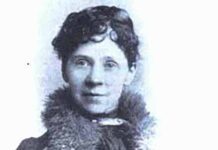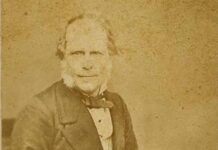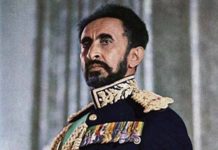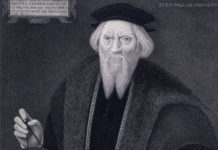In May 1928, President Hoover appointed Theodore Roosevelt Jr. to the position of Governor General of Puerto Rico. Roosevelt was in Vietnam at the time on an expedition for the Field Museum of Chicago. The appointment was to take effect on Roosevelt’s return from the expedition.
Roosevelt Suffers From Malaria and Dysentery
Roosevelt’s wife, Eleanor, journeyed to Vietnam to meet her husband for his trip. When Roosevelt finally arrived in Saigon, his wife did not recognize him. In Eleanor’s words, she had never seen anyone so sick. Roosevelt was gassed during World War I, his wife saw him then, and in comparison, she thought the sickness was worse. A man of small stature to begin with, Roosevelt lost forty-two pounds and the local French doctor diagnosed him with Malaria and Dysentery.
Roosevelt spent a few weeks recovering from his illness before the couple boarded a ship for the journey back to the States. Roosevelt still suffered the effects of the Malaria and only weighed 102 pounds; so frail did he appear that the crew of the ship took bets as to whether he would survive the voyage.
On the journey home, Roosevelt spent each day talking with a man who spoke Spanish. He also studied his Spanish textbooks and by the time they arrived in San Francisco, he could understand Spanish, albeit he could only speak a few words.
The Governor Arrives in Puerto Rico
On 7 October 1929, Mr. and Mrs. Theodore Roosevelt Junior arrived in San Juan, Puerto Rico. The governor’s ship arrived in the harbor, and was welcomed with cannon from the old fort firing in salute. A reception committee arrived onboard to greet the governor. Soon afterwards, police escorted Roosevelt through cheering crowds, to the steps of the capitol where he gave his inauguration speech.
Roosevelt spoke the first paragraph of his speech in English, and then switched into Spanish that brought cheers from the crowd. He spoke of the economic hardships of the islanders and acknowledged the problems of the people. At the conclusion of his rain-shortened speech, the new governor drove to the Government house.
The Government house, La Fortaleza, was half palace, half castle, and was the oldest gubernatorial residence under an American flag. The residence, originally built to be a fortress in 1529, later became the Spanish governor’s residence in 1629.
Hardship of the Puerto Ricans
For four centuries, the Puerto Ricans suffered under Spanish rule. Liberated by the Americans during the Spanish-American war in 1898, the Puerto Ricans were at fist joyous. Ernest Gruening, future governor of Alaska, said in an editorial in the New York Times, “Somehow their high hopes have been persistently disappointed … a miscellany of governors, some indifferent, others worse, succeeded one another … political hacks or lame ducks.”
Unemployment, disease, malnutrition, and poverty were pervasive on the island. The year before Roosevelt’s inauguration the island also suffered a devastating hurricane that left entire villages ruined and crops destroyed.
Shortly after taking up residence in La Fortaleza a group of country folk came to the palace and begged Roosevelt to tour the country and not to ignore the common people as so many of his predecessors had.
Roosevelt Tours Puerto Rico
Shortly after the visit by the country folk, Roosevelt started taking inspection trips, visiting over seventy towns. Roosevelt rode a horse into the mountains and visited towns that no previous governor had seen. Roosevelt delighted the people by listening to their problems firsthand and by attempting to speak to them in Spanish. Roosevelt’s wife reported that he memorized twenty new Spanish words every night before bed.
Occasionally Roosevelt’s attempts to speak Spanish caused some humorous moments. When a group of people asked him where his wife was he meant to say she was tired and stayed behind, instead he said he left her behind because she was tiresome. On another occasion he meant to introduce a General by saying, the man was a poor bachelor; instead, he called him a tapeworm. Still the people applauded Roosevelt and loved him for attempting to speak their language.
Roosevelt Brings the Plight of Puerto Rican Children to the American Public
At the conclusion of his six-week inspection tour, Roosevelt decided to inform the American public of the poverty of the Puerto Ricans. Writing in the New York Sunday Herald Tribune, Roosevelt said, “Sixty-seven percent of the children are undernourished. Many are slowly starving. On the roads time and time again, I have seen little groups carrying tiny, homemade coffins. One public school in San Juan, the capital city, has an enrollment of 710 boys and girls. Of these 223 come to school without breakfast. 278 have no lunch. We are able to provide lunch for just fifty-four and the rest go hungry.”
The result was a public outcry against the fact that children living under the American flag were starving. The Bureau of Insular Affairs administered Puerto Rico and asked Roosevelt to stop writing about the conditions on the island. Roosevelt politely refused and soon President Hoover sent a commission from the American Child Health Association to study the problem.
The commission reported to the president that the conditions on the island were as bad as Roosevelt reported. Soon money started to flow into the island. Despite the financial crash of 1929, the people of the United States sent money and aid to the island.
President Hoover Visits Puerto Rico
In March 1931, President Hoover arrived in Puerto Rico aboard the USS Arizona. Hoover was only the second president to visit the island, the first being Roosevelt’s father, Teddy Roosevelt. Roosevelt took the president on a tour of the major towns and the president received ovations everywhere they journeyed.
Roosevelt Appointed Governor General of the Philippines
Roosevelt enjoyed a successful tenure as governor of Puerto Rico. In January 1932, Hoover appointed Roosevelt as Governor General of the Philippines. Roosevelt left Puerto Rico better than he found it. Poverty decreased, unemployment decreased, the island exported more crops, and tourism increased. The Baltimore Evening Sun ran an editorial that said of Roosevelt, “one of the finest, and perhaps the finest colonial governor in our history.”
Roosevelt took his governing philosophy to the Philippines, where he enjoyed great success, and became a beloved governor. Later Roosevelt would prove his courage on the shores of Normandy, earning the Congressional Medal of Honor on D-Day.
References:
- Roosevelt, Eleanor B. (Mrs. Theodore Roosevelt, Jr.), Day Before Yesterday, Doubleday & Company, Inc., Garden City, New York, 1959, 478pp.
- Walker, Robert W., The Namesake, The Biography of Theodore Roosevelt, Jr., Brick Tower Press, New York, 2008








